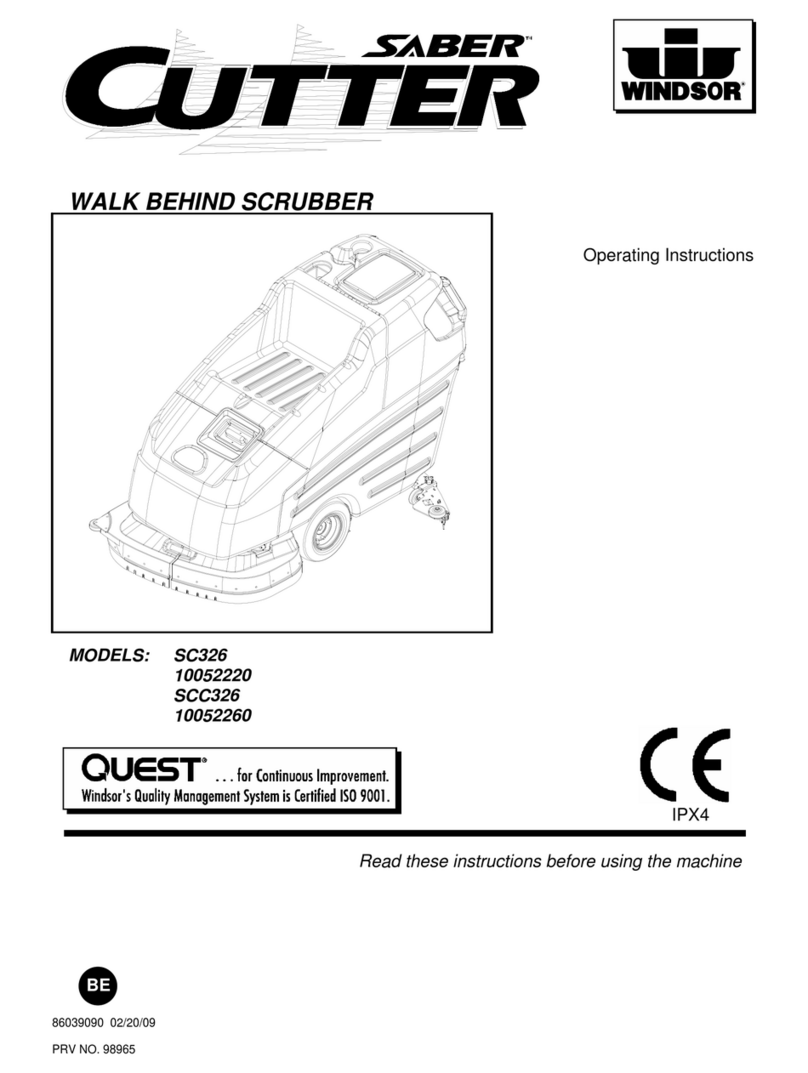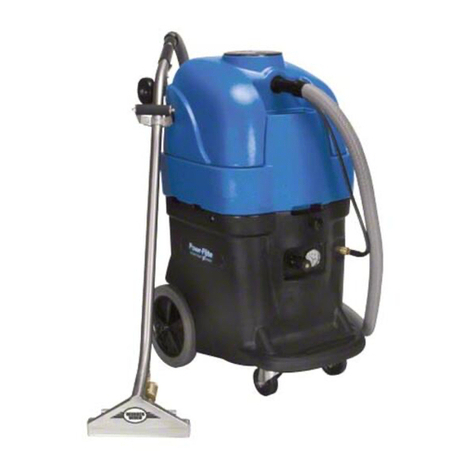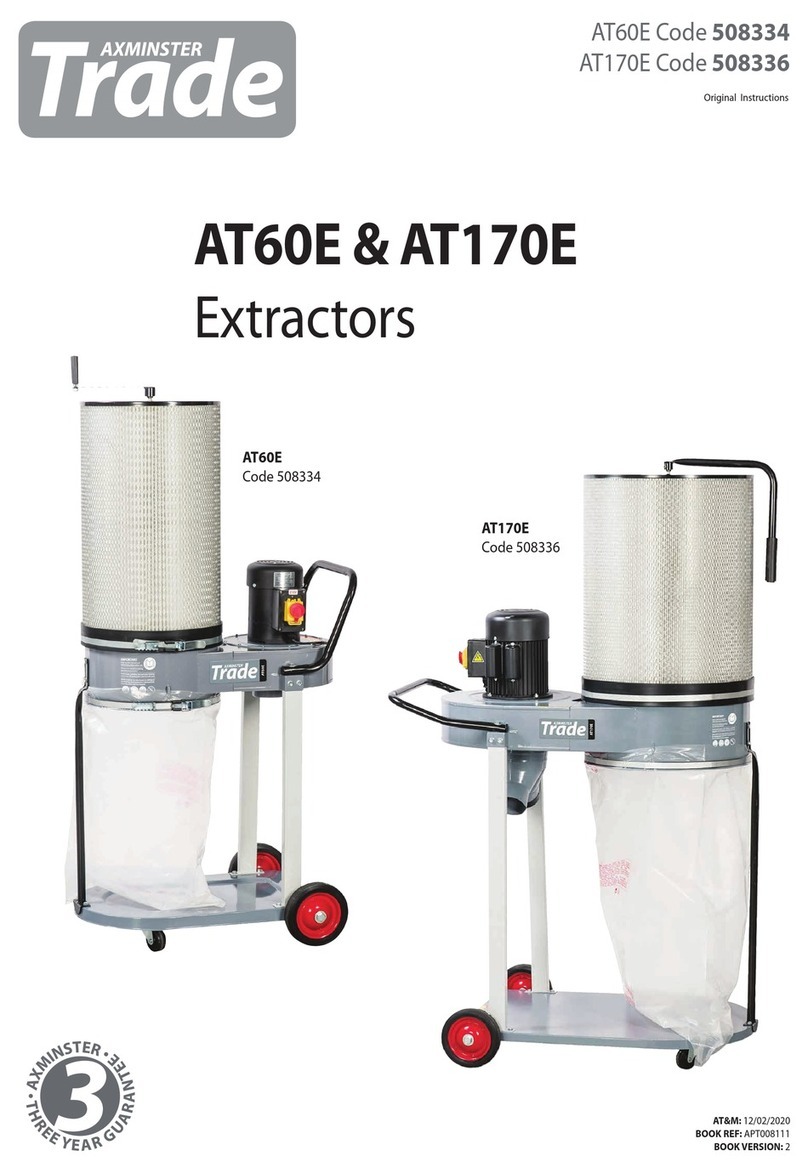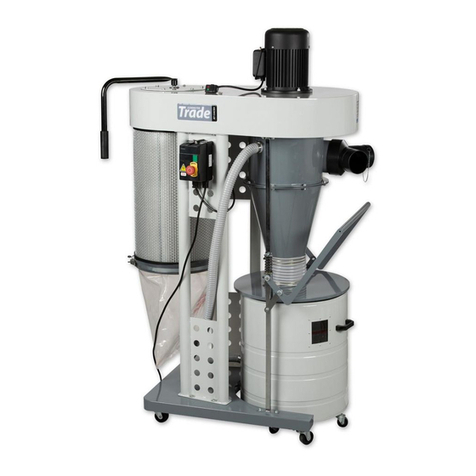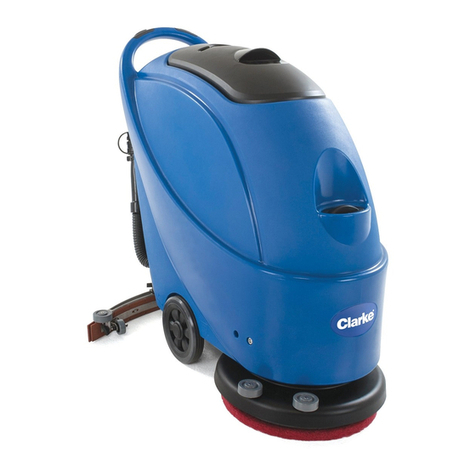
General Instructions for 230V Machines
4
These machines are supplied with a moulded 16 Amp plug and
3 core power cable. Before using the machine, inspect the cable
and the plug to make sure that neither are damaged. If any
damage is visible, have the damaged item inspected/repaired
by a suitably qualified person. If it is necessary to replace the
plug, it is preferable to use an ‘unbreakable’ type that will most
resist damage. Only use a 16 Amp plug, and make sure the cable
clamp is tightened securely. Fuse as required. If extension leads
are to be used, carry out the same safety checks on them, and
ensure that they are correctly rated to safely supply the current
that is required for your machine. Remember, most machines or
tools have handles or holding positions, the power cable is not
one of them.
Good Working Practices/Safety
Mains Powered Tools and Machines
Primary Precautions
Workplace/Environment
The following suggestions will enable you to observe good
working practices, keep yourself and fellow workers safe and
maintain your tools and equipment in good working order.
WARNING!! KEEP TOOLS AND EQUIPMENT
OUT OF THE REACH OF YOUNG CHILDREN
KEEP THE WORK AREA AS UNCLUTTERED AS
IS PRACTICAL,THIS INCLUDES PERSONNEL
AS WELL AS MATERIAL. UNDER NO CIRCUMSTANCES
SHOULD CHILDREN BE ALLOWED IN WORK AREAS.
The machine is not designed for use outside. Keep the
machine clean; it will enable you to more easily see any damage
that may have occurred. Clean the machine with a damp soapy
cloth if needs be, do not use any solvents or cleaners, as these
may cause damage to any plastic parts or to the electrical
components. It is good practice to leave the machine
unplugged until work is about to commence, also make sure
to unplug the machine when it is not in use, or unattended.To
avoid inadvertent ‘start up’, if your machine is not fitted with
a NVR system, ensure the switch is always returned to the OFF
position. Once you are ready to commence work, remove any
tools, objects or items that could inadvertently get ‘sucked up’
by the machine and place safely out of the way. Re-connect
the machine, ensuring the power cable is not ‘snagged’or
routed where it could be tripped over as you move about the
workshop; it is not too close to an unguarded heat source, or is
laid over or around a sharp edge.
If the work you are carrying out is liable to generate flying
grit, dust or chips wear the appropriate safety clothing,
goggles, gloves, masks etc. If the work operation appears to
be excessively noisy, wear ear-defenders. If you wear your hair
in a long style, wearing a cap, safety helmet, hairnet, even a
sweatband, will minimise the possibility of your hair being
caught up in the rotating parts of the machine. Likewise,
consideration should be given to the removal of rings and
wristwatches if these are liable to be a‘snag’ hazard.
Consideration should also be given to non-slip footwear, etc.
DO NOT use this machine if you are tired, your attention is
wandering or you are being subjected to distraction.
DO NOT use this machine within the designated safety areas of
flammable liquid stores or in areas where there may be volatile
gases. Above all, OBSERVE…. make sure you know what is
happening around you and USE YOUR COMMON SENSE.
Specific Safety for Dust Extractors
DO NOT use this machine as a vacuum cleaner, try to keep the
waste medium to wood by products.
DO NOT uplift workshop floor debris (stones, nails, screws, paper
etc., etc). Be aware that wood dust is an explosive medium.
DO NOT allow any ‘naked light’ source to occur anywhere near
the machine.This includes cigarettes, matches, etc, and do not
place the machine near any unprotected light bulbs, that could
possibly get broken.
The suction force is generated by a high speed fan unit.This
has the potential to amputate fingers, grab loose clothing (ties
etc) and ‘bat’ large chips etc, at high speeds. Keep all guarding
in place, and if access to the fan becomes necessary (due to
blockage etc) disconnect the machine from the mains supply
and ensure the fan has come to a complete stop before putting
your hands anywhere near it.
If you are not using ‘clear’ extraction hose, periodically
remove the hose to check that the inlet to the machine is not
getting restricted. The safety guard grill of the inlet duct can be
particularly irksome in this way, as long strand shavings etc., can
wrap around the grill fret.
Keep the particle filter clean.The machine relies on its ability
to ‘blow’ air through the filter to generate good suction. If the
particle filter starts to clog this reduces the air flow and hence
the machine becomes less efficient.
The particle filter can be cleaned by using an ‘M’ class vacuum
cleaner, clean the inside of the filter.
